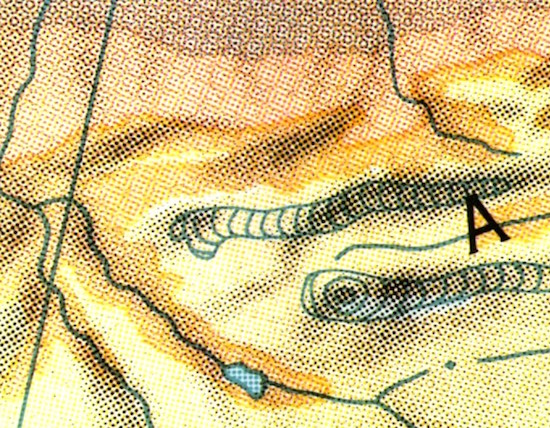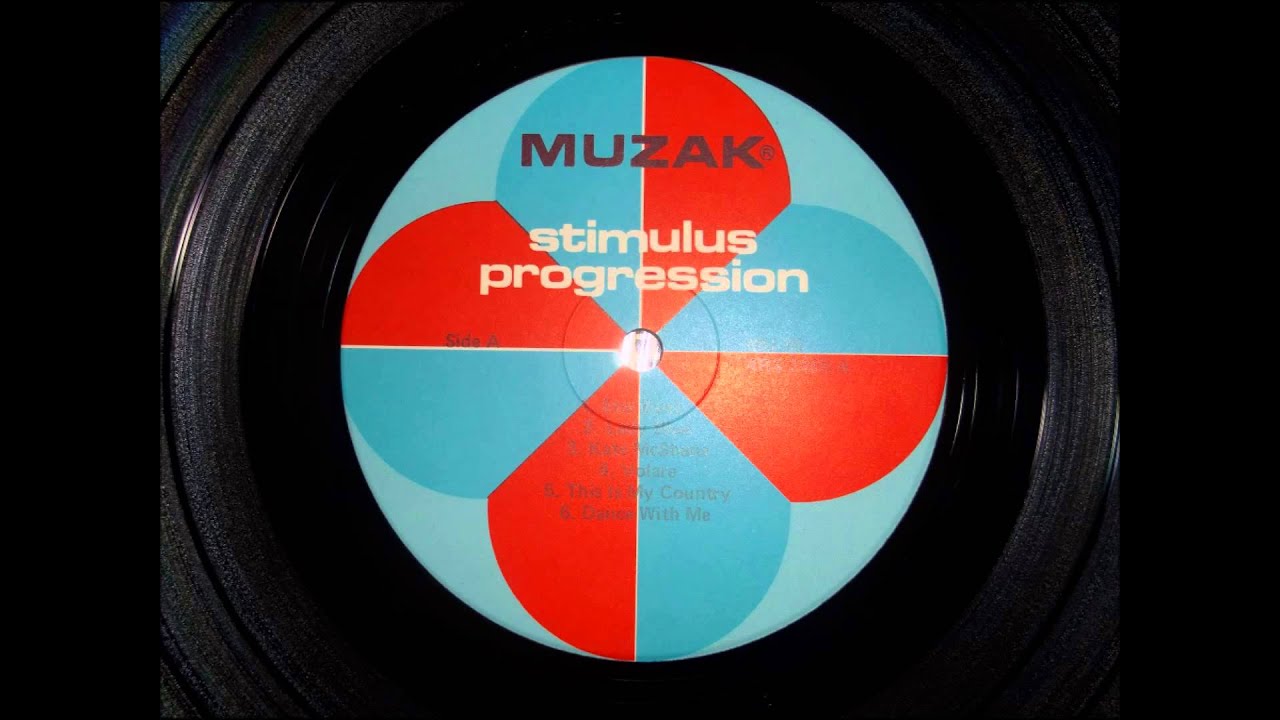While Brian Eno didn’t invent the idea of music that becomes part of the environment, he was able to synthesise some of the disparate ideas around the form, and in 1978 he gave that form a name with the release of Ambient 1: Music For Airports. Included in the liner notes of the LP was a short essay written by Eno on his intentions: "Over the past three years, I have become interested in the use of music as ambience, and have come to believe that it is possible to produce material that can be used thus without being in any way compromised. To create a distinction between my own experiments in this area and the products of the various purveyors of canned music, I have begun using the term Ambient Music."
This "canned music" to which Eno refers started In the mid-1940s when the company Muzak Inc. developed a system called Stimulus Progression; 15 minute chunks of instrumental background music designed to subconsciously motivate workers and increase productivity. The music itself, while competent, was also pleasant to a damning degree; jazzy orchestral ensembles playing lilting, derivative arrangements intended only to decorate the office or commercial environment. As such, the idea of ‘background music’ didn’t hold up well to artistic scrutiny and the term ‘Muzak’ – or ‘elevator music’ – became reappropriated, often derisively, to describe any music of low artistic merit that merely sank into the ether and not demand one’s close attention.
But the idea with Eno’s ambient music was different: it could be at once part of the furniture of the room and simultaneously listened to in-depth, offering rewarding results. As Eno himself put it: "Ambient Music must be able to accommodate many levels of listening attention without enforcing one in particular; it must be as ignorable as it is interesting."
Music For Airports made good on this intent. Across its four tracks, short musical fragments drift in and out of phase, rhythm and harmony; each one repeating and colluding with one another in constantly shifting and unpredictable combinations. Soft but sonically detailed textures overlap at a level of sustained pace and dynamic that allows the listener to choose the degree at which they listen. The pieces, constructed by tape loops of variable and arbitrary length, feature synthesizers, pianos and voices played at different speeds and intervals, allowing an automatic clustering of their musical content – very simple seeds that end up growing into complex and beautiful sonic gardens through chance and probability.
It’s quite a different world today to the pre-Walkman era of Music For Airports; music is now a fully mobile endless continuum. Streaming culture has given us unlimited access to music at all times, and the ability to play it anywhere whenever we want has arguably allowed for the promise of Eno’s Ambient ideal to be fully delivered. Almost any space can now be sonically coloured with great ease, and the technology to create interesting music has never been more widely available. Indeed, the popularity of the form in the streaming era seems relatively huge – one look at Spotify’s official ambient-themed playlists reveal follower numbers of anywhere between 50,000 and five million.
But closer inspection of these ambient playlists reveal depressingly homogeneous blobs of music devoid of original ideas, and lacking any sense of doubt or uncertainty that might have made them interesting.
The trademarks are relentless: overcompressed and muted pianos quantized within an inch of their lives, stock choral synth patches through cheap-sounding reverbs, the softest and purest sine wave synthesis available – everything completely anaesthetised and lacking any room for nuance or error. Even the artwork is beaten into homogeneity; lapping waves on coastlines, sunsets through windows, incongruous geometric shapes imposed over snow-capped mountain ranges. This is the musical equivalent of magnolia walls and the word "RELAX" cast in resin and sat in the bedroom just to remind you that’s what you do there.
Of course, on the other side of the coin are many brilliant and visionary artists whose work may be considered part of the vague ambient genre tag but of which often contain an implied narrative, concept or meaning that outweighs their ability to be neutral enough for the truly ambient. Julianna Barwick, Huerco S, Tim Hecker, Sarah Davachi; these contemporary artists make deeply rich and atmospheric works, but – beautiful and interesting though they are – they are of worlds that have too strong a gravitational pull over the listener for them to exist stably as music in the playlist ecosystem.
So how did we end up so far from a music that was meant to be as ignorable as it was interesting? Part of the problem may be how the term ‘Ambient’ became interpreted as per Eno’s new definition. During the late 80s and early 90s it was increasingly used to describe any instrumental music of a largely electronic nature possessing an ethereal quality, free of a discernible rhythm and lacking a lead vocal line. This was mostly down to the idea of the ‘chillout room’ pioneered at London’s Heaven nightclub; an area where clubbers could retreat from the intensity of the main club in favour of a wash of ambient music. This fusion of purpose gave birth to the ambient house genre that became characterised by atmospheric pads and soft downtempo rhythms and was further popularised by Ibiza’s Cafe Del Mar compilations, released once every year since 1994.
The washed out timbres of ambient house and chill out music heightened their meditative qualities, leading to an association with New Age spiritualism. This connection has arguably harmed Ambient music’s standing due to a general cultural suspicion of New Age tropes such as faith healers, channelers and alternative medicines. In 2018, however, contemporary ‘wellness’ philosophies have broken through where New Age spiritualism failed; the repackaging of meditation practices fit for Western audiences is a more accepted and hugely popular form of self care. Yoga, mindfulness and meditation are now booming industries that have birthed entire lifestyles around themselves. But the genuine benefits of these practices can often be clouded by their naff aesthetics and hopeless stereotypes, and ambient music’s evolution within this world has unfortunately suffered a similar result. Music bundled with meditation apps are not unlike most of what can be heard on Spotify’s ambient playlists: staid compositions that reference the natural world in very on-the-nose ways.
This modern form of ambient lacks the variety, possibility and most importantly, the strangeness within the four albums that made up Eno’s Ambient series. Ambient 2: Plateaux of Mirror(1980), a collaboration with composer and pianist Harold Budd, was a largely improvised album of Satie-like piano pieces in lush landscapes of Eno’s electronic treatments. Ambient 3: Day Of Radiance(1980), perhaps the most striking release in the collection, featured Eno’s treatments on zithers and hammered dulcimers played by Laraaji. The first half of the album comprises variable tape speed playbacks of Laraaji’s rapid, rhythmical playing; the resulting effect inducing deep, trance-like states.
By contrast, Ambient 4: On Land(1982) is a dark and textural album with very little musical information. Its abstract layers of reprocessed, recycled sounds and field recordings evoke both real and imagined landscapes, bucolic scenes wrestling with the twisted hinterlands of nature; less music for an environment, but rather one
Included with On Land was a diagram of a suggested three-way speaker system that the listener could construct to help them become enveloped in the sound. And therein, perhaps, lies the crucial distinction: Ambient, in the sense that Eno meant it, was not really a genre at all, but rather a mode of listening. It also encompassed a mode of composition whose construction could displace regular musical and structural anticipation, and leave the expectations of cadence and rhythm to one side: to allow the music to sit still within the environment.
Last year, there was some controversy that Spotify might be directly commissioning producers to create bespoke playlist-ambient music, thus avoiding paying royalties to other established artists creating better work in the same field. These claims turned out to be false, as The Verge discovered – while these artists were racking up millions of plays in ambient playlists despite having no profile outside of the Spotify machine, they were either artists using pseudonyms, or others whose music was taken from a variety of library sources.
While that may have absolved Spotify in a moral sense, it begged the question: how are Spotify much different from Muzak Inc. back in their day? What are ambient playlists but a distributor of stock compositions, a vehicle for lowest common denominator music designed to help people focus on spreadsheets? Spotify after all, is yet another company whose business model thrives on the obscenely sustained engagement – and personal data – of its large consumer base. Pushing seamless hordes of dull ambient music in abundance is an ingenious way of doing just that.
43 years on from its release, Discreet Music, Eno’s first foray into generative and ambient composition, still seems like a perfect distillation of his idea. Sometimes upon listening to it, its soft, reedy textures constantly whirring slightly in and out of tune coalesce in ways where you can’t quite pin down their exact combination. Other times it’s as though it’s barely there at all; a few spots of cloud sliding across a wide panorama of clear-blue. But at all times it remains a space of calm and consideration, aiding the ability to process and reflect. This is the true potential of ambient music on environments, and its promise still feels largely untapped.



